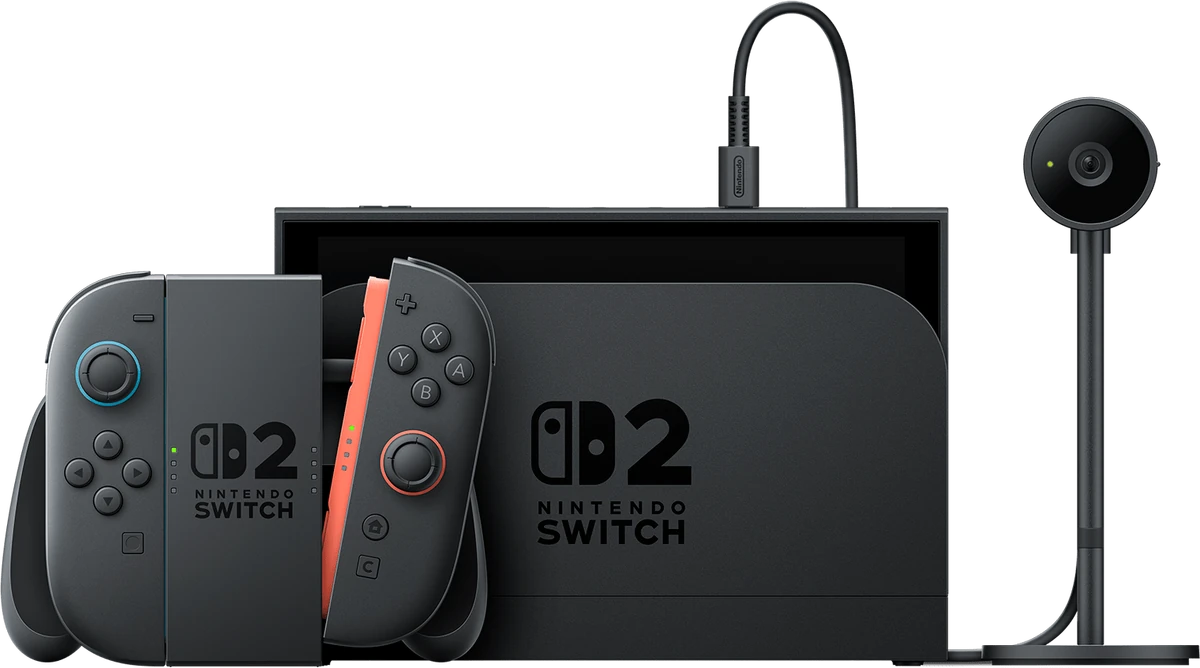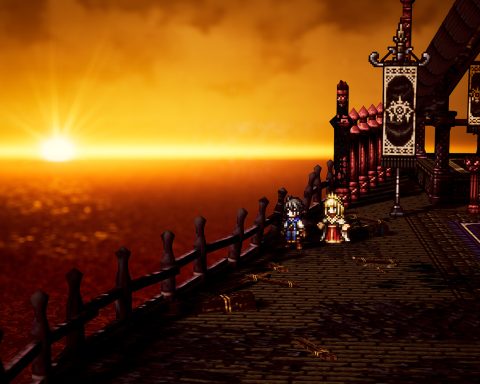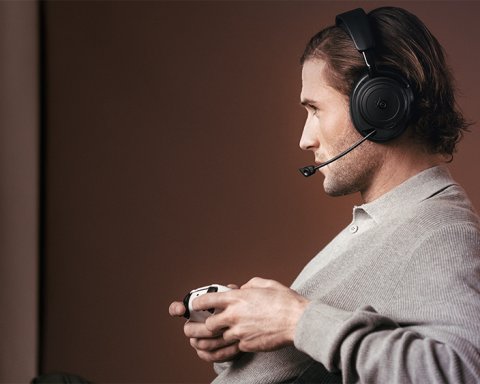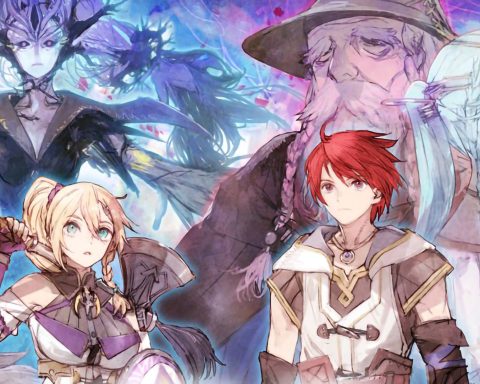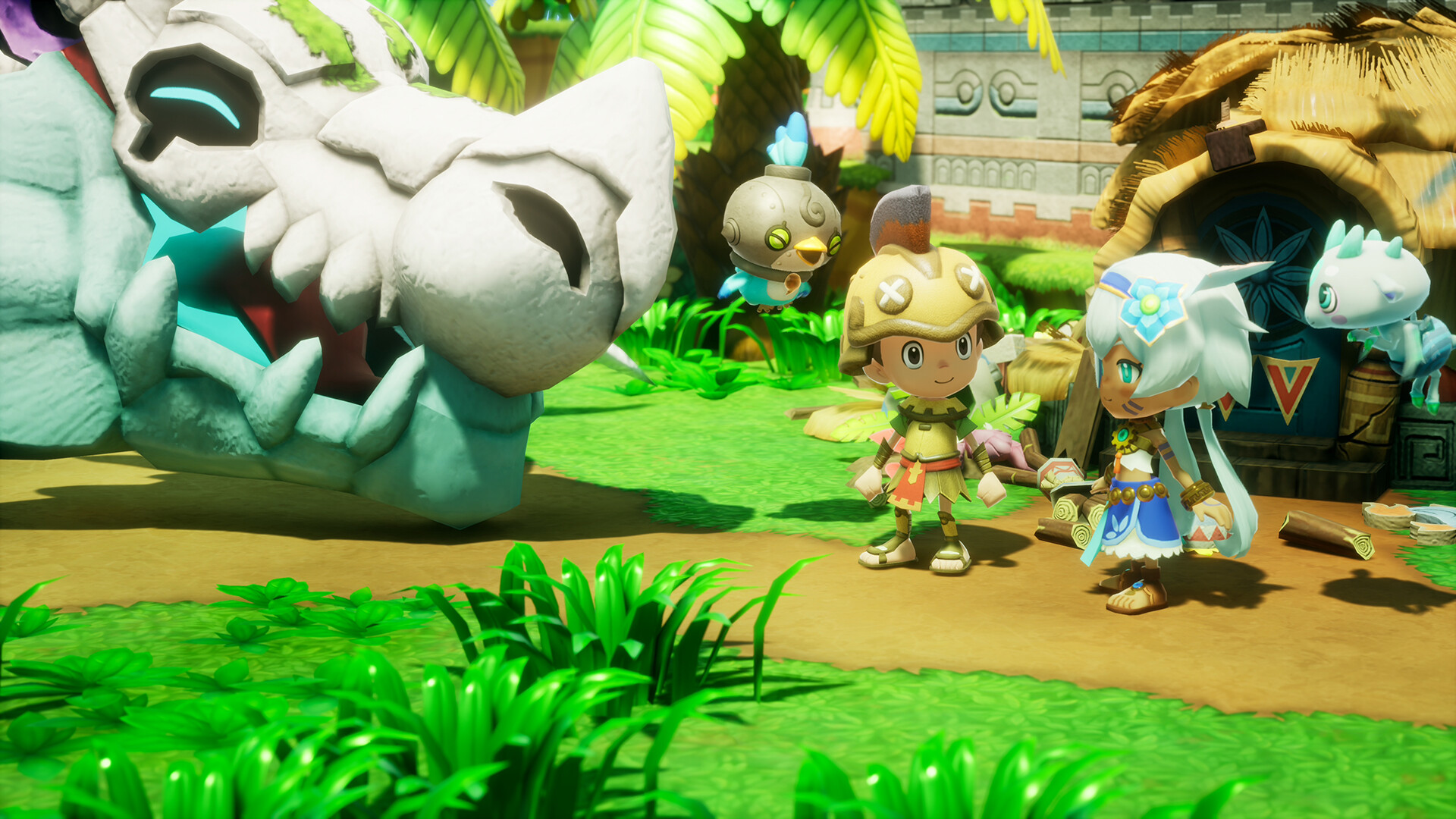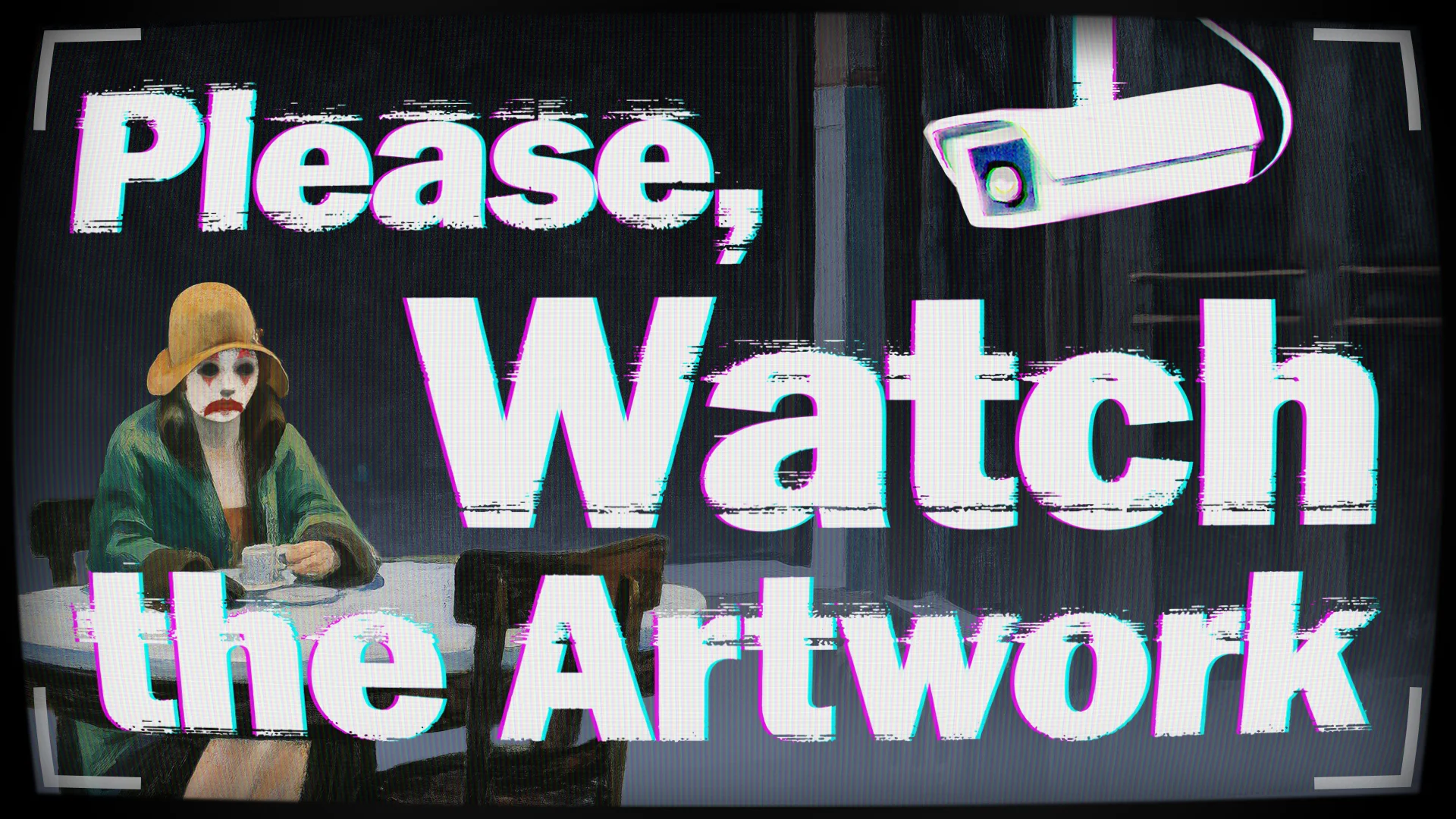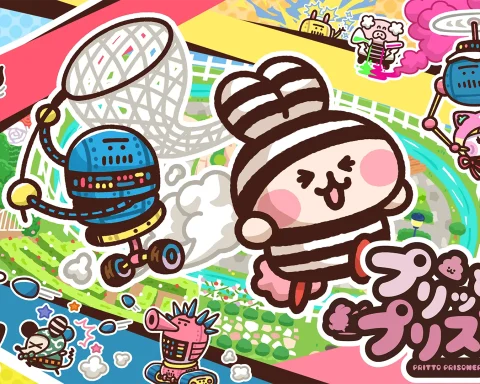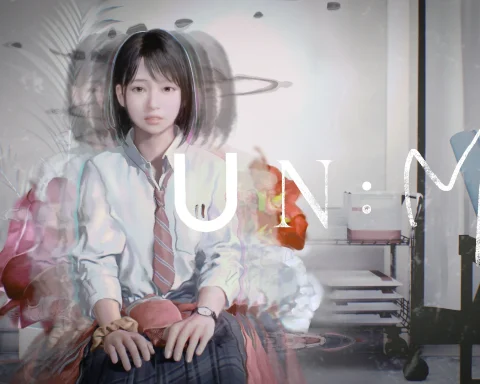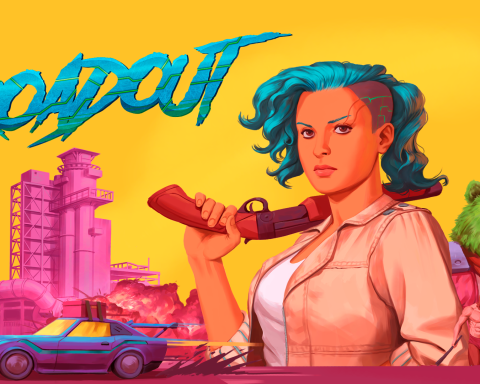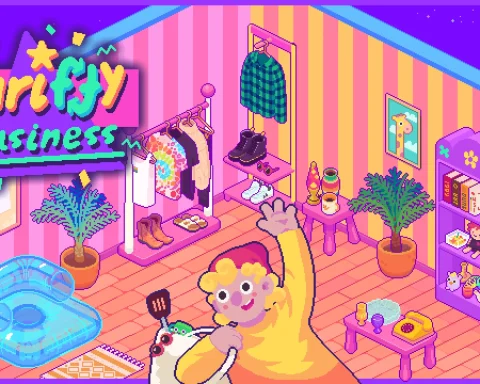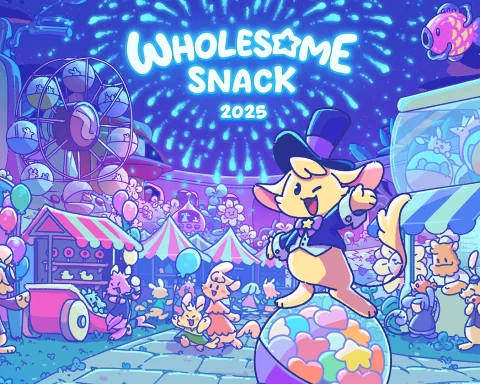To put this review very simply: The Nintendo Switch is my favourite console of all time, and the Switch 2 is the sequel to that. You could argue that this is almost shockingly safe by Nintendo, given the whimsical direction that the company has taken with most of its modern hardware refreshes, but at the same time this is a substantial improvement on the original Switch… and there’s a bit more whimsy hidden away in there than you notice at first glance.
Talking about the most obvious features first; The Nintendo Switch’s screen is big and beautiful. Nintendo has ensured that the weight is distributed across the device gorgeously, and as a result, this console is so very comfortable in the hands.
Once you turn the screen on, you’re greeted with some lovely colour and contrast. I was concerned that as a Switch OLED fan, it would be difficult to “go back” to an LCD screen, but it hasn’t been. I still think the OLED is slightly better in terms of brightness and contrast, but it’s so close to splitting hairs, and what Nintendo has produced is as good as I have ever seen in an LCD screen. Playing games on this screen is exceptional, with 1080p being more than sufficient to allow for a HD experience in the hands. Meanwhile, the Switch 2’s internals are up to the task, and the Switch 2 ports of HD games like Yakuza 0 are every big as vibrant and enjoyable to play as they are on any other platform. Meanwhile, original games like Mario Kart World do show a substantial lift in scale, visual detail, animation quality and energy over the predecessor. The Switch 2 might not be a PlayStation 5 in the hand, and its improvements over the Switch might seem modest at times, but it is a powerful handheld, every bit as capable as what any of the PC handhelds can deliver. And, frankly, that’s enough.
Now in 1080p, Switch 2 games look inherently better than Switch games ever did. The Switch 2 does play Switch games, as we all know. Because those Switch games are “blown up” to meet the new screen size and resolution, the games do look a little fuzzier then you might remember from the Switch itself, but that’s by no means enough to make them unplayable. In fact, since picking up the Switch 2, I’ve largely split my time between Switch and Switch 2 titles, and while something like Mario Kart World does look better than Mario Kart 8 (as you would hope it would, given the years between them), the older games don’t look “legacy” by any means.
Meanwhile, there are several really neat little features that enhance the games that support them. My favourite of these is the ability to use the right Joy-Con in detached mode as a mouse. When this was initially announced, I was highly sceptical of it, given that the Joy-Cons are thin and mice are… typically quite wide. As it turns out, it has been nothing but a pleasure to play Nobunaga’s Ambition or Civilization VII in “mouse mode.” In the latter’s case, it doesn’t save a generally poor game from being ruinous to one of the greatest properties in video games, but that’s not the hardware’s fault.
The left Joy-Con doesn’t have a mouse input, but it can be used simultaneously with the mouse, so I would think it’s only a matter of time before we start seeing some action games to go with the obvious application of the mouse to strategy titles. But speaking of that, where I’ve often struggled with RTS titles on consoles thanks to controller input, the Switch 2 has a very convenient solution there, and now I want all the strategy games to come out on Switch 2.
Other features I haven’t had the opportunity to mess around with too much. The enhanced rumble feels great in a tech demo in that Welcome Tour app, but none of the launch titles make a big deal of it. The gyroscope in the console is also very precise, and we know that, thanks to the Welcome Tour again, but again, the game developers haven’t really touched it yet. The new “Microsoft Teams but actually fun” game chat feature is great, and the ability to share screens, invite people into games, or simply chat while playing different games creates a fun “game room vibe” and is almost achingly close to what a local multiplayer session could offer for a game night when friends and family are dispersed around the world. There are no games that make this absolutely essential, but there’s a lot of potential in video avatars, share screens, and all the rest of it. And I really didn’t think I’d care for that feature. I use Zoom and Teams for work so much that video chat is totally ruined for me. Or so I thought. Turns out life can be fun when it’s not infested with suits and corporate-speak.
Altogether, there is a veritable toy chest of features and capabilities in this console that developers can, and I hope will, take advantage of. So, while the Switch 2 looks like a mild enhancement on its predecessor, once you sit down to play with it, its not just that it offers a significantly boosted gaming experience, but the hardware itself has unique charm and personality too.
With all those positives out of the way, there are three things I need to warn everyone about. Firstly, invest in a really good memory card. The Switch 2 only supports MicroSD Express cards (not regular MicroSD cards), and those come at a premium, but you’re going to want a minimum of 512 GB, if not the 1 TB card. The Switch 2 itself has a reasonable 256 GB built in, and if you were only filling it with Switch games that would be even generous, but the Switch 2 at launch has several games that are 50 GB or larger, and I would expect that soon enough they’ll start creeping ever closer to 100 GB, so it’s the MicroSD Express card that is going to be the difference between having access to a large library on-demand or needing to constantly delete and re-install things.
Secondly, the heat. In handheld mode, the Switch 2 doesn’t get too hot. Don’t lie it on a surface where the ventilation is compromised and the only patch of warmth will be the middle of the device, which, thanks to the side of it, your hands won’t come into contact with. However, when it’s docked, it’s a different story. The lack of ventilation in the dock does cause heat to build up, and it feels substantial. My recommendation would be to invest in an additional small fan to point at the crevices in the dock and try and move some of that hot air away. As someone who almost never played the first Switch in docked mode, I don’t expect this will be an issue for me, personally, but it is something that others should be aware of.
Thirdly, the battery life is not great. It’s hard to shake the feeling that handheld device power has accelerated more quickly than battery technology innovation, because across the handheld PCs and now Switch 2, battery life is just unacceptably short for what are meant to be portable devices. About two hours of play on normal settings, and you’re going to need a recharge. Perhaps consider investing in a portable battery for gaming on the go.
Finally, this isn’t really a criticism, of the hardware, but it’s relevant: Nintendo does clearly want people investing in digital games rather than physical copies of things, so at launch the majority of games available are either download-only, or that weird hybrid, where you buy a physical cartridge, but inside is just a license to a digital download copy. There aren’t that many games that are proper physical, cartridge-based media that doesn’t require a subsequent download.
There are advantages to investing in a digital library on the Switch 2. Family sharing is a really neat feature that lets you “lend” out virtual games to people, and then reclaim them two weeks later. That feature was added to the Switch itself late in life, and while I wish it were less restrictive (it already restricts lending to people that share a Nintendo Online family account, so why not allow people to simply lend games online? The requirement that both people be in the same physical area really undermines the feature’s value), it is a great feature that I do make use of.
However, for people who care about the preservation of media (and I am one of them), the Switch 2 is the latest in a worrying trend that is going to see fewer and fewer titles get a proper physical release at all. And where there isn’t a physical release, there’s the problem that once the servers are turned off, the games start disappearing from the world. All the stats in the world show that digital distribution is totally replacing physical editions, and the niche that cares about that is so small that, for the most part, limited releases are the best way to go to approach that market. Much like vinyl records, really. Whether Nintendo is doing what it can to continue to indulge that audience while moving the business (and console) elsewhere, or whether the company is specifically looking to undermine physical releases, is a matter of debate. Either way, though, it is a pity that the Switch 2 has been set up in such a way that ducking into your local game store for physical cartridges won’t be such a joy this time around.
Overall, I do find these issues to be minor, and they never got in the way of the stuff I did like about the console, or the games I was playing on it. While the console isn’t perfect, it’s just so good that it will be my preferred device for games wherever possible going forward. The Switch was such a good console that it was a rare day when I didn’t play it for at least some time, and I ended up with well over 1000 games on it. The Switch 2 not only has access to those 1000 games, but it’s better hardware and now sets me up for another half decade or longer of this approach to gaming by Nintendo. I couldn’t be happier.
